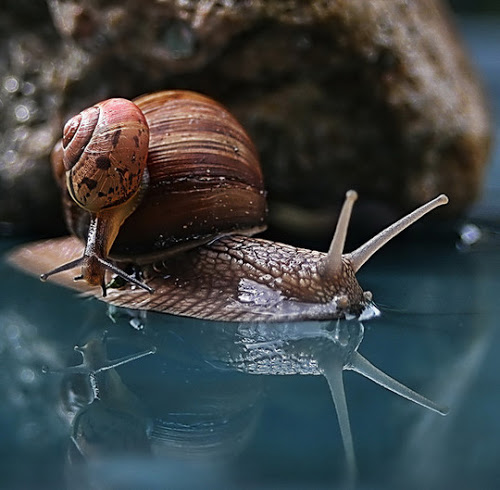Fascinating facts about mollusks, you probably don”t know…
Mollusks make up one of the largest and most important phyla in the animal kingdom with more than 100,000 species, including the familiar invertebrates like snails, clams and octopuses. Although most live in the sea, mollusks are also found in fresh water and on land. Most species live in shells, which protect their heads and soft bodies.
The shell is produced by a membrane covering the body called the mantle. Octopuses and squid don’t have shells and can walk on their tentacles or swim quickly by a kind of jet propulsion. Most species, however, move about by using a sort of muscular foot. Mollusks have been used as food and material tools since primitive days. Later they were used as money, ornaments and religious symbols. They also carry disease, damage ships and clog water pipes. Some are poisonous.
Chitons
Chitons (Amphineura) are small, sluggish, primitive animals with flat oval bodies. They feed on seaweeds. Some have shells that are made up of eight overlapping plates that cover the flat upper side of the body. Chitons are often called coat-of-mail shells because their overlapping plates resemble suits of armor worn by medieval knights.
Tusk Shells
Tusks shells (Scaphopoda) have tabular shells that are curved and open at both ends. The animal inside is very simple. Though it has a mouth, jaws, tentacles and a digestive system, it has no true head, gills or eyes. The sexes are separate, and young shells go through a planktonic larval stage. The adults protect themselves by digging into the sand.
As the tusk shell moves slowly through the sand it catches small particles of food on the ends of its sticky tentacles and maneuvers them back to its mouth.
Univalve Mollusks
The largest category of mollusks is the univalves (Gastropoda). These include marine animals like cowries, cones, limpets, sea slugs and whelks as well as fresh water species like ponds snails. The word snail is commonly applied to those with a coiled spiral shell. Most have spirals shell, but some have shells of a different shape or no shell at all. The shell grows from the edge of its open end, and the number of spirals indicates its age. Univalves have tentacles, eyes and a mouth containing the radula, a rasping organ set with many horny teeth. Most feed on vegetable matter, though some, like cone shells, whelks and certain snails, eat other animals.
Most univalves use their wide, flat foot to creep along the ground, but some float in water, and a few have a fin-shaped foot for swimming. An individual may have both male and female reproductive organs. The young usually pass through a planktonic larval stage. Though freshwater snails do not have larvas on their own, they quite often play host to the larvas of some parasitic worms that transmit serious diseases to humans. The shells of certain univalves such as the cowrie have been prized in some societies as ornaments, money or religious symbols.
Using its single foot to good advantage, a common European pond snail (Limnea stagnalis) crawls along a sandy bottom. Pond snails like this are often used as scavengers to keep aquariums clean.







I remember the first photo- if i'm not mistaken yan yung niluluto sa gata na marami sa Makiling? jejeje yung last naman madami nyan samin sa marinduque nung bata pa ko at ginagawa namin pet hehehe
Growing up, I used to see most of these mollusks. Something that my kids seldom experience.
Wow! I never knew this! I've never seen tusk shells before. It's pretty weird though.
Slimy mollusks! They're nice and fascinating to look at, but I wouldn't dare touch them. Lol!
I don't like mollusks Tay feeling ko sisipsipin nila dugo ko.